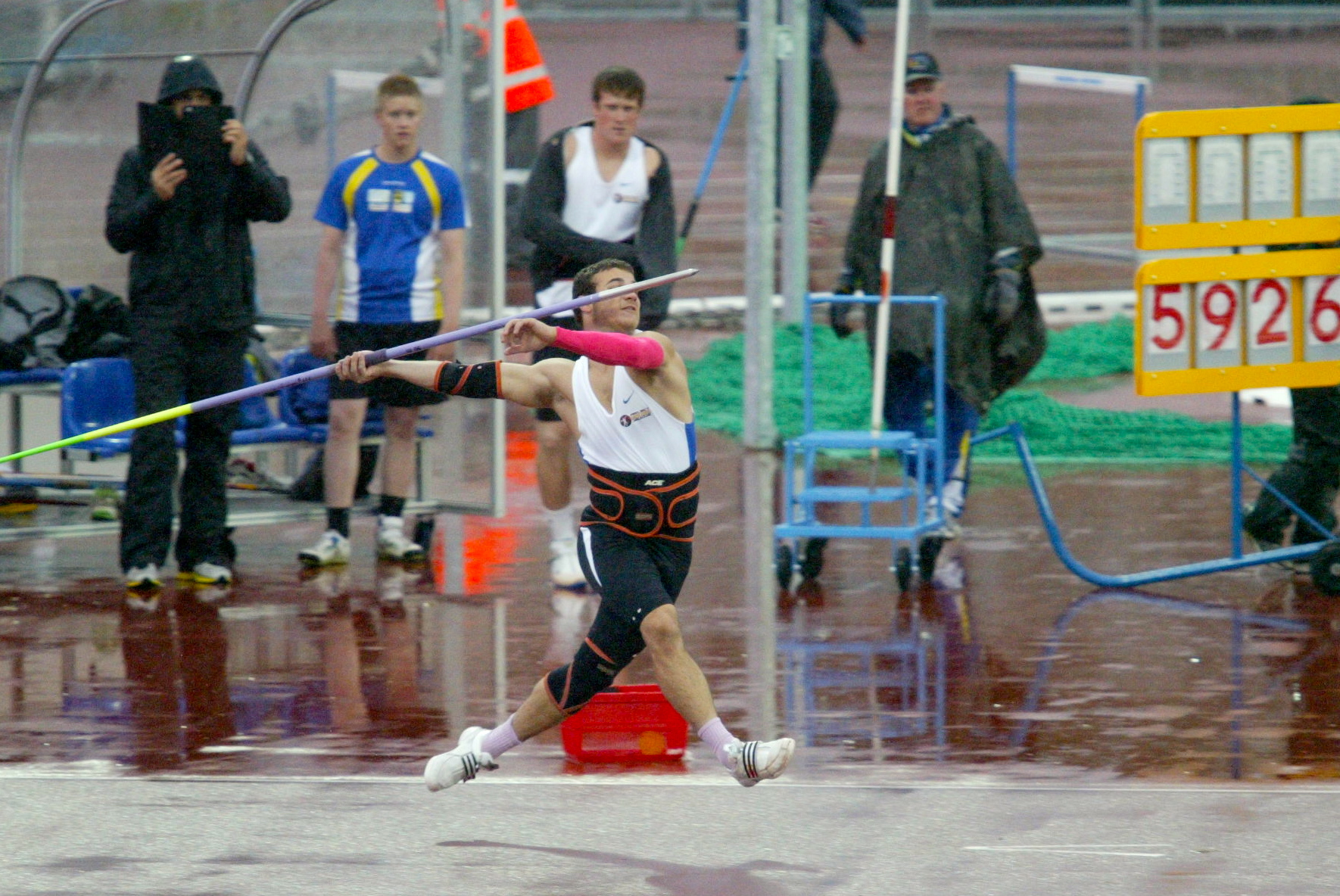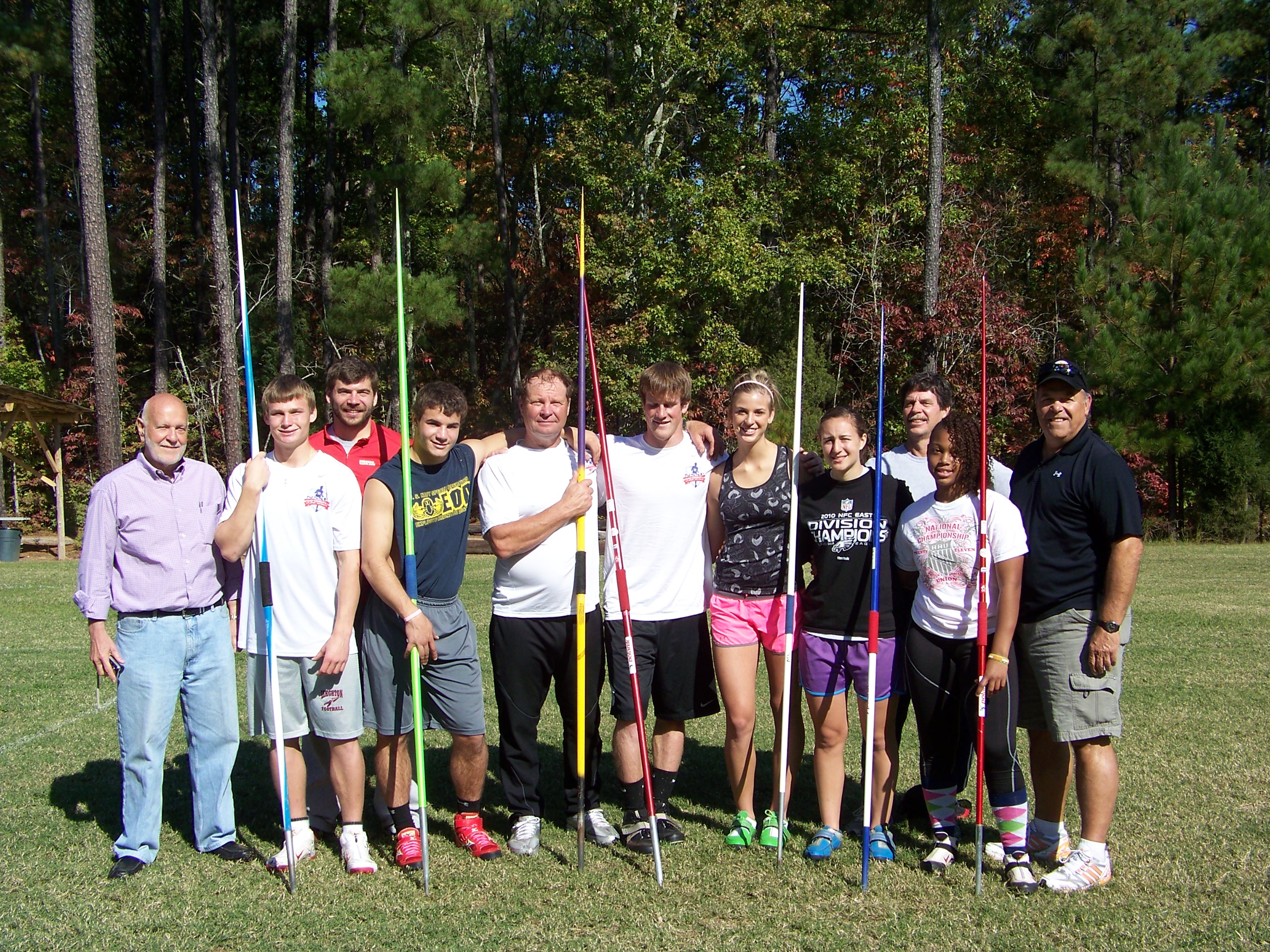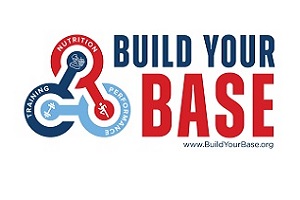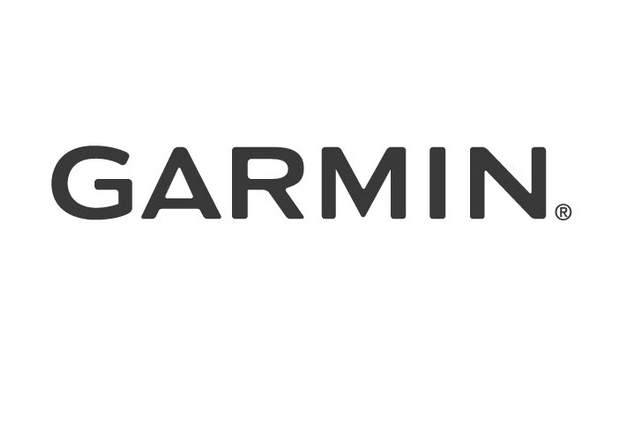Project Kultan Keihas -Filling an Obvious Need
 Bill Schmidt sees the need.
Bill Schmidt sees the need.
Obviously. He’s the last American man to be invited to the javelin throw medals stand at the Olympic Games (with his bronze at Munich in 1972.)
Jeff Gorski sees the need.
Obviously. He’s the founder of of the Kultan Keihas Project designed to encourage, train and motivate young American men and women in the fine art of throwing the javelin great distances and competing at the highest levels in the sport.
Barry Krammes sees the need.
Obviously. He’s the still-outstanding thrower (who had the longest throw achieved at the 2008 Olympic Trials, was an Olympic Trials finalist again in 2012) and is now making his mark as both athlete and coach.
Jim Spier, Joy Kamani and Paul Limmer see the need.
Obviously. They are the driving forces behind the National Scholastic Athletics Foundation, Spier as the NSAF’s founding father and executive director; Kamani as the NSAF’s chief operations officer and attorney; famed coach Limmer as an NSAF board member, and it’s the NSAF that has played such an incredible role in the promotion of youth and scholastic athletics in the nation for the past two- dozen-plus years.
So when all these good people pooled their best efforts, the NSAF / Kultan Keihas Project’s historic venture - sending six of America’s finest young javelin talents off on a nine-day learning and throwing expedition to Finland, the storied land where javelin is both king and queen - was a certain success.
Obviously.
It all happened between July 31 and August 8th, 2012.
Spier, Kamani, Limmer and Krammes squired the six throwers on their “Suomi” adventure. (Schmidt and Gorski, NSAF keys, continued their support from stateside.) “It was a phenomenal experience for me, and everybody else who was part of it,” reported Kyle Felpel. “I learned so much. In just that short time, I became a much better thrower.
“I learned so much that I can apply to all my training in the future. I did all kinds of stretching and flexibility drills, hurdles drills, everything. And it all paid off - I had the best meet of my life there." (In the tour-capping finale at Oulu, in north Finland, just below the Arctic Circle.)
“It was one of best educational experiences of my life,” said ChristineStreisel. “Of course, we all learned so much about the javelin, but we also learned about Finland and Finnish culture - and why they love the javelin so much over there - and we had a lot of fun doing it. “Every day we learned something new. We did medicine ball drills, lifting drills, runway drills, you name it.
“We picked up on so many of the small things that are so important to the over-all throwing performance. We learned about body position, chest position, arm position, They’re all things that are so often overlooked at home. Now, they’ll all be part of my training.”
“The javelin is so much a part of Finnish culture, and we got to experience all of that,” said Jonathan Strauss. “Finnish kids, they think about the javelin all day long, from breakfast first thing in the morning, and on. They are totally focused.
“They are just so much more efficient, generally, than we are. It’s no wonder they are so successful.
“We saw how lifting is such a big key. In America, we almost always focus on morestrength, more power. Over there, it’s almost always on building more flexibility, and explosiveness. “Doing this, they emphasize the squat snatch, hang-cleans, and some standard squats.
“One key exercise is taking a 10-kilo plate, or a 25-kilo plate, overhead, and stretching into javelin position. At times, this was painful. But if you did it right, you’re able to avoid any pain once you’re throwing.
“A lof of American kids wind up injured, and that often sours them on the javelin. But when you’re on the runway, and you get it right, it’s a tremendous feeling. “The javelin is not an easy event. You’ll always have so many ups and downs. You might have one high for every five lows. But that one high is always worth it.”
Felpel, of Ephrata, Pa., is now a freshman at the University of Alabama, where he’ll be a mechanical engineering major and Crimson Tide javelin hopeful. Streisel, of Tamaqua, Pa., is the Penn Relays champion and a high school senior who lists Duke and Wake Forest high on her list of possible destinations.
Strauss, of Lehighton, Pa., is a freshman at Moravian College but hoping to transfer to the U.S. Naval Academy, where he’d be an engineering major and train under veteran coach Al Cantello, the 1960 USA Olympian and former world javelin record-holder.
Completing the six-athlete delegation were Avione Allgood of North Las Vegas, Nevada, and the nation’s two most celebrated young jav people, Haley Crouser and Sean Keller.
Well before the trip, Crouser, Keller and Allgood proved they were ready for prime-time. Just nine high school athletes were good enough to compete in the 2012 USA Olympic Trials in Track Town USA - Eugene, Oregon - and Crouser and Keller certainly made their mark.
Gresham, Oregon’s Crouser - of the famed Crouser family throwing team - placed seventh in the women’s jav at the Trials with a 179-8 toss, just off her own national record of 181-2. She’d also won at National Juniors and placed 11th at World Juniors in Barcelona. Best of all, she has a final year of high school competition yet to go.
Vancouver, Washington’s Keller came to the Trials as the reigning U.S. junior men’s champion and placed eighth in the finals, with a 246-5 after a PR 253-0 in the qualifying round. Like Crouser, he then jetted off to Barcelona for World Juniors - but didn’t reach the final - before embarking on the Finland trip.
North Las Vegas, Nevada’s Allgood is bound for the University of Oklahoma on scholarship after starring in the jav event, which - ironically - is not a sanctioned event in Nevada. She’d placed second in the 2011 USA Juniors and is No. 2 all-time in the U.S. back of Crouser.
Spier, Kamani and Limmer selected Krammes as USA team coach and he got rave reviews for his role in it all. “Barry has become an invaluable asset to the group, reinforcing what is learned each day, and adding to his own arsenal of coaching techniques,” Spier would blog.
“Barry’s a terrific role model for all of us,” said Strauss. “He’s not only a great thrower but also a great teacher and coach (based in East Stroudsburg, Pa.) He’s still throwing at a world-class level but he finds time to help so many younger throwers, too. He really helps you get in the right mindset for all of this.”
“We were very lucky to have Barry with us,” said Streisel. “He’s a great confidence-builder, He’s a big contributor to my success.”
The 10-person entourage (Spier, Kamani, Limmer, Krammes and the six throwers) jetted away on July 31 and got going in earnest on arrival the next day at the Kourtane, Finland Sports Resort that would be their training base.
Meeting up with the famed Kimmo Kinnunen, Finland’s national junior coach, was a big part of the whole process. Now he’s one of the world’s leading javelin coaches and he has the portfolio of honors to back up all the lessons he teaches. Joining him was Finland national coach Karri Ihalinen
Kinnunen earned a gold medal at the 1991 World Championships in Tokyo and a silver at the 1993 Worlds in Stuttgart. In the Olympic arena, he placed fourth at Barcelona in 1992 (less than a meter off the medal stand) and seventh at Atlanta in 1996.
The all-time list of throwers with the “new” javelin - after specifications for the implement were revised in 1986 - has just 13 names of men who’ve broken 90 meters (295 feet, 3 inches) and Kinnunen is one of them, with his huge 90.82 winner (297-11) at the 1991 Worlds.
The world mark of 98.48 (323-1) has been the property of Czech great Jan Zelezny since 1996. Louisianan Breaux Greeer has held the American record of 91.29 (299-6) since 2007.
The American women’s record is 66.67 meters (218-9) set by Kara Patterson in 2010 and ranks her 16th all-time globally.
“Kimmo exemplifies what the Finnish javelin throwing tradition is all about,” said Strauss. (His father, Jorma Kinnunen, was the 1968 Olympic silver medalist. His older brother, Jarkko, was the 1989 European junior silver medalist. And now it’s Kimmo’s kids beginning their own javelin careers.)
“We could see the passion they have for the javelin in Finland, we could see it by their body languagem," said Strauss. "Things like that said it all.”
The first days in Finland's featured light physical activity, technical sessions, drills and some throws. Next it was on to special power sessions, and special running/jumping/bounding drills. Then came specialized mobility and runway drills, and more general training sessions.
 Competition day was Tuesday, Aug. 7th in Oulu, said to be the largest city in all of Northern Scandinavia, and a four-hour bus ride from Kourtane.
Competition day was Tuesday, Aug. 7th in Oulu, said to be the largest city in all of Northern Scandinavia, and a four-hour bus ride from Kourtane.
“We found a modern stadium, seating about 2,500, with radio, TV, timing and press areas along the top of the stands, all enclosed and heated; we were pleasantly surprised,” blogged Spier. “Additionally, the facility had a state-of-the-art scoreboard, fully automatic timing, a wind gauge and laser measurement. This is first class.”
Unfortunately, though, the weather was not first class. As Spier put it, “winds about 20 mph, with heavy rains, heavy horizontal rains.”
Considering everything, as Spier put it, “they performed extremely well, exceeding our expectations.”
Keller won the young men’s event with a fine 235-1 toss. Jami Kinnunen (son of Kimmo, owner of a 253- 3 PR) was second at 218-11, with Felpel third (202-5) and Strauss (194-2) fourth. Crouser (158-8) and Streisel (133-10) placed 2-4 against Finnish rivals in the young women's event.
“I would say you could easily add 20 feet to these performances to get what they would have thrown under better conditions,” wrote Spier.
Krammes stressed many points is his post-trip report. Among them:
1. Warmup and cool-down is much longer than I have experienced. In some of the sessions, the warmup and cool-down was longer than the actual workout.
2. Runway javelin work and specific running drills were exeptional. There was a real emphasis on getting the athletes to be more dynamic and smooth."
Among his bottom lines:
The trip allowed these athletes the opportunity to experience what it really takes to be a professional javelin thrower, not just at the high school level,not just at the collegiate level, but at an international level.
“In the United States, there is no systematic javelin development in place, like Finland, Germany, Russia, etc. The NSAF is in a way developing that system. Putting these athletes in the same training environment as world-class javelin throwers and being involved in that systematic approach left a lasting and invaluable impression on the six athletes.”
More good news is that NSAF and Project Kultan Keihas - meaning “javelin gold" in Finnish - have even bigger plans for the future.
Coming up October 11-14 is the second edition of the Project Kultan Keihas javelin clinic in Chapel Hill, North Carolina, directed by Klub Keihas founder Jeff Gorski, the former USA Track and Field high performance director for the javelin. Future trips are a good possibility, too.
In brief breaks in the action in Finland, the traveling group got to catch snippets of London Olympic TV action. They may have seen three American men place 23rd, 32nd and 38th over-all in the qualifying round of the javelin, and three American women wind up 15th, 24th and 31st - none of them close to advancing to their respective 12-thrower finals.
Obviously, there’s a lot of work to be done. Say the word with emphasis: “Obviously.”





